As 2015 is starting, many in the investment circle are looking at what new industries and companies are presenting opportunities. While this is important, it is just as important to note what industries not to pick for this upcoming year. Here is my short list (no pun intended) of what industries are facing some significant headwinds and is good to avoid in this coming year. (If you are long (i.e expecting the value to go up), that is. But if you are looking for shorts (trying to profit by a falling in stock price), feel free to be as aggressive as you like; but be warned, as the great the economist John Maynard Keynes said, “The market can stay irrational longer than you can stay solvent”.)
- Small Oil and Gas companies with high fixed costs
Oil and gas are among the largest industries in the world (with an estimated 5 trillion dollars in revenue, rivaling the tech in dustry). Due in part to the massive stock market boom in the last few years, many small oil and gas companies emerges in the public markets. They range from extraction companies to oil exploration to small manufacturers of drilling equipment. With a falling oil price that is not likely to rise any time soon, these small producers with limited resources will likely falter. Moreover, natural resources extraction is a highly capital intensive industry and the firms will likely take on massive amounts of debts to finance its projects. It is estimated that drilling each oil well costs about 3 to 4 million dollars and small companies with a highly leveraged structure and few prospects for growth will be the likely victim in 2015. (Interested in Big Oil and corruption? click here For more on how the falling oil prices are affecting nations around the world, see here)
dustry). Due in part to the massive stock market boom in the last few years, many small oil and gas companies emerges in the public markets. They range from extraction companies to oil exploration to small manufacturers of drilling equipment. With a falling oil price that is not likely to rise any time soon, these small producers with limited resources will likely falter. Moreover, natural resources extraction is a highly capital intensive industry and the firms will likely take on massive amounts of debts to finance its projects. It is estimated that drilling each oil well costs about 3 to 4 million dollars and small companies with a highly leveraged structure and few prospects for growth will be the likely victim in 2015. (Interested in Big Oil and corruption? click here For more on how the falling oil prices are affecting nations around the world, see here)
- Small tech companies that have no prospects of being bought up by the big guys
In this category, the companies that come to mind will be the small software development firms, such as app-makers that makes their business around a single app. For example, Zynga, the maker of the popular app game “Farmville”, is one  such company. The company is involved in the social gaming category and have not expanded by much in the last couple of years, and are instead are trying to monetize its existing products. For a company involved in app-development, if no new apps are introduced continually, then the firm will simply wither away when demands for the current app disappears (as it most certainly will since consumer tastes are constantly changing). Monetization will be difficult, since a majority of the company’s revenue still comes from selling of advertising space and the market is increasingly saturated by the
such company. The company is involved in the social gaming category and have not expanded by much in the last couple of years, and are instead are trying to monetize its existing products. For a company involved in app-development, if no new apps are introduced continually, then the firm will simply wither away when demands for the current app disappears (as it most certainly will since consumer tastes are constantly changing). Monetization will be difficult, since a majority of the company’s revenue still comes from selling of advertising space and the market is increasingly saturated by the  amount of advertisings out there, and increasing diminishing rates of return. Of course, the best that these tech companies can hope for is to be bought up by the larger players such as Facebook. However, with the proliferation of software companies, larger tech companies have more options to choose from and will take care to only add firms that adds value to the company’s operations.
amount of advertisings out there, and increasing diminishing rates of return. Of course, the best that these tech companies can hope for is to be bought up by the larger players such as Facebook. However, with the proliferation of software companies, larger tech companies have more options to choose from and will take care to only add firms that adds value to the company’s operations.
- Small biotech or pharmaceuticals purporting to have “wonder drugs” or new “breakthrough technologies”
For those of you who subscribes to some form of investment newsletters (it doesn’t matter if they are free or charge you hundreds of dollars per year), you have no doubt saw a number of different promotions that talks about how a certain company is on the verge of growth. With a booming biotech sector, a lot of less credible companies have been swept up as well. These companies can have the following traits in common:
 Involving cancer-curing or purporting to cure multiple diseases at once with a single drug. These are often simply scientifically unsound, and investors should do some basic research on the subject and use common sense in sorting some of these issues out.
Involving cancer-curing or purporting to cure multiple diseases at once with a single drug. These are often simply scientifically unsound, and investors should do some basic research on the subject and use common sense in sorting some of these issues out.- Often in the early stages of the clinical trials, often Phase I and II. The early trials is to simply establish the safety of these medicines and their efficacy; these can often be subjected to statistical manipulation. (ex. in a trial for breast cancer treatment intended for women, the results show that no significant results have been found. However, the company claimed that the results work for a sub-group of that population. The population becomes much smaller and perhaps is simply the results of random chance.)
- Long clinical stages and delays in pushing forward to the next stage or toward FDA approval. If a company is a scam or have a drug that is on the verge of failure, the company will likely take as long as possible to “test” the drug. They will take their time for as long as possible in order to reap profits for insiders. Sometimes, some of these companies will even “retest” their drug once more for a certain stage, claiming insufficient data. This is a huge red flag, for a successful drug company will want to rush forward to start monetizing the drug by getting FDA approval. Delays to do so could suggest that the company is nothing but an elaborate promotion.
Note, I am not suggesting the biotech sector as a whole will do poorly this year; after all, the biotech sector, as measured by NASDAQ Biotechnology Index (ETF), is up around 30% from over a year ago and there is no reason to think such a trend will not continue, albeit at a slower pace.
- Restaurants and related services that are heavily dependent on consumer cyclical spending
Last year, several newly IPOed restaurants have taken a hit following the miss in expected earnings (ex. Potbelly’s, El Pollo Loco). The struggles in the restaurant industry is not lost upon many professional investors; in fact, some of the most  heavily shorted stocks (as measured by short interests) in the US are in the restaurant sector. Restaurants in general are low-margin, with high fixed costs, with tremendous competition, and susceptible to variances in consumer sentiments. All of these makes them good companies to avoid investing in at any given time. But in 2015, there are macroeconomic factors at play here as well. Even though the US economy have outperformed its peers in the developed economies, consumer disposable incomes have not risen appreciably over the past year or so. Americans simply aren’t spending as much on restaurants as before, and the growing competition for healthy food options left many traditional restaurant chains and fast-food restaurants little options but to change what they are offering to clients. These changes will take a long time to implement, and will be extremely costly, even if they are successful at all. (McDonald’s recent advertising campaign is a good example of a restaurant trying to reshape their brand image).
heavily shorted stocks (as measured by short interests) in the US are in the restaurant sector. Restaurants in general are low-margin, with high fixed costs, with tremendous competition, and susceptible to variances in consumer sentiments. All of these makes them good companies to avoid investing in at any given time. But in 2015, there are macroeconomic factors at play here as well. Even though the US economy have outperformed its peers in the developed economies, consumer disposable incomes have not risen appreciably over the past year or so. Americans simply aren’t spending as much on restaurants as before, and the growing competition for healthy food options left many traditional restaurant chains and fast-food restaurants little options but to change what they are offering to clients. These changes will take a long time to implement, and will be extremely costly, even if they are successful at all. (McDonald’s recent advertising campaign is a good example of a restaurant trying to reshape their brand image).
Then there are these companies that have certain characteristics that makes them a bad investment in any scenario, but especially so with the bull market that we have been having for the past few years.
Among many economists, the longer the bull market runs, the more likely the crash in the market will be severe. Therefore, the companies that have been swept up in the bull market ride will be the first ones to fall.
- Companies in industries with low barriers to entry and no competitive edge that cannot be replicated
A name that comes to mind in this case is GoPro. The company essentially does one thing, which is to produce cameras  that are frequently used by outdoorsman. This sole area of operation is inherently risky in itself. However, with the passage of time if the business is successful, there is no reason to suspect why larger companies with significantly more resources will not pursue a similar line of business and crush the competition. Companies that are reliant upon a single product or service are extremely vulnerable.
that are frequently used by outdoorsman. This sole area of operation is inherently risky in itself. However, with the passage of time if the business is successful, there is no reason to suspect why larger companies with significantly more resources will not pursue a similar line of business and crush the competition. Companies that are reliant upon a single product or service are extremely vulnerable.
- Foreign based companies with obscure operations
The stock market boom not only attracted bad domestic companies to IPO. Many foreign companies are also taking notice of the market and want to raise money as well. Some of these companies may indeed have good intentions of raising money to fund their operations. Or they may simply be a fraud and simply want a piece of the actions in the market and enrich themselves. These companies can have names that sound grand, invoking their national titles and inflate their own importance. (They may have a naming structure like “‘name of country’ – ‘industry’ corporation”. i.e. Sino-Forest Corporation). Many of these companies claimed that they have great growth potential in their respective home country and it is next to impossible to ascertain what they are saying is true. A few years back, there was a huge wave of Chinese reverse mergers (i.e. a private company is taken public by purchasing a public shell company) that IPOed in the United States. Many of these companies banked on the investing public’s optimism in the economic growth of China and cooked their books to paint a rosy picture for themselves. Eventually, the frauds were eventually exposed. Many of these companies have complicate structures with unclear relationships with their parent company or its subsidiaries. Sometimes, it is also unclear how the companies make their money or the level of their debt obligations (often disguised as other business segments).

One of the things you might have noticed is how many times I have used the word “small” in the preceding passages. This is key. Smaller companies in all the industries mentioned have a much higher chance of going bad or simply being fraudulent that the large ones. I believe that the market is efficient for the large-cap companies that have been carefully scrutinized, and the prices are likely where they should be. (Of course, there are cases like Enron, but in that case, the business is so indecipherable that it is bad idea to be even thinking about it). So when investing, remember to keep the company’s size in mind.
Note: The above article expresses solely my personal opinion. This is a blog, after all. Please do not utilize the articles as investment advices; or if you do (I will be sincerely flattered that you would listen to a sophomore in college), please do your own due diligence before investing. I do not hold any stocks or any form of investments whatsoever.


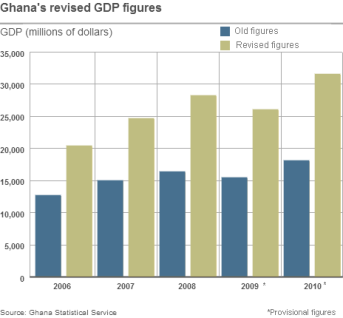
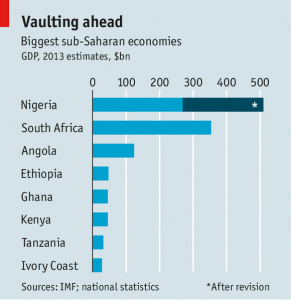

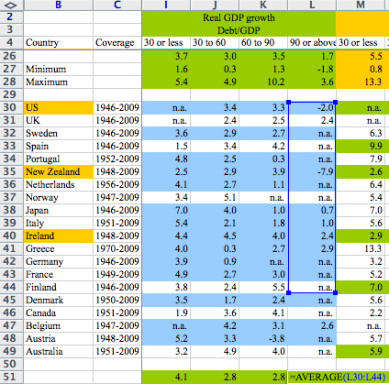
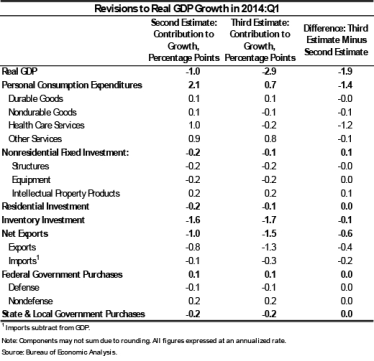
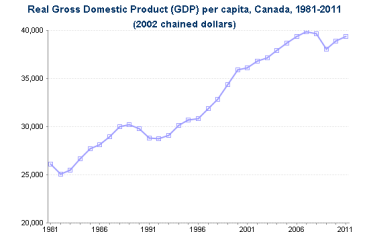


 heavily shorted stocks (as measured by short interests) in the US are in the restaurant sector. Restaurants in general are low-margin, with high fixed costs, with tremendous competition, and susceptible to variances in consumer sentiments. All of these makes them good companies to avoid investing in at any given time. But in 2015, there are macroeconomic factors at play here as well. Even though the US economy have outperformed its peers in the developed economies, consumer disposable incomes have not risen appreciably over the past year or so. Americans simply aren’t spending as much on restaurants as before, and the growing competition for healthy food options left many traditional restaurant chains and fast-food restaurants little options but to change what they are offering to clients. These changes will take a long time to implement, and will be extremely costly, even if they are successful at all. (McDonald’s recent advertising campaign is a good example of a restaurant trying to reshape their brand image).
heavily shorted stocks (as measured by short interests) in the US are in the restaurant sector. Restaurants in general are low-margin, with high fixed costs, with tremendous competition, and susceptible to variances in consumer sentiments. All of these makes them good companies to avoid investing in at any given time. But in 2015, there are macroeconomic factors at play here as well. Even though the US economy have outperformed its peers in the developed economies, consumer disposable incomes have not risen appreciably over the past year or so. Americans simply aren’t spending as much on restaurants as before, and the growing competition for healthy food options left many traditional restaurant chains and fast-food restaurants little options but to change what they are offering to clients. These changes will take a long time to implement, and will be extremely costly, even if they are successful at all. (McDonald’s recent advertising campaign is a good example of a restaurant trying to reshape their brand image).